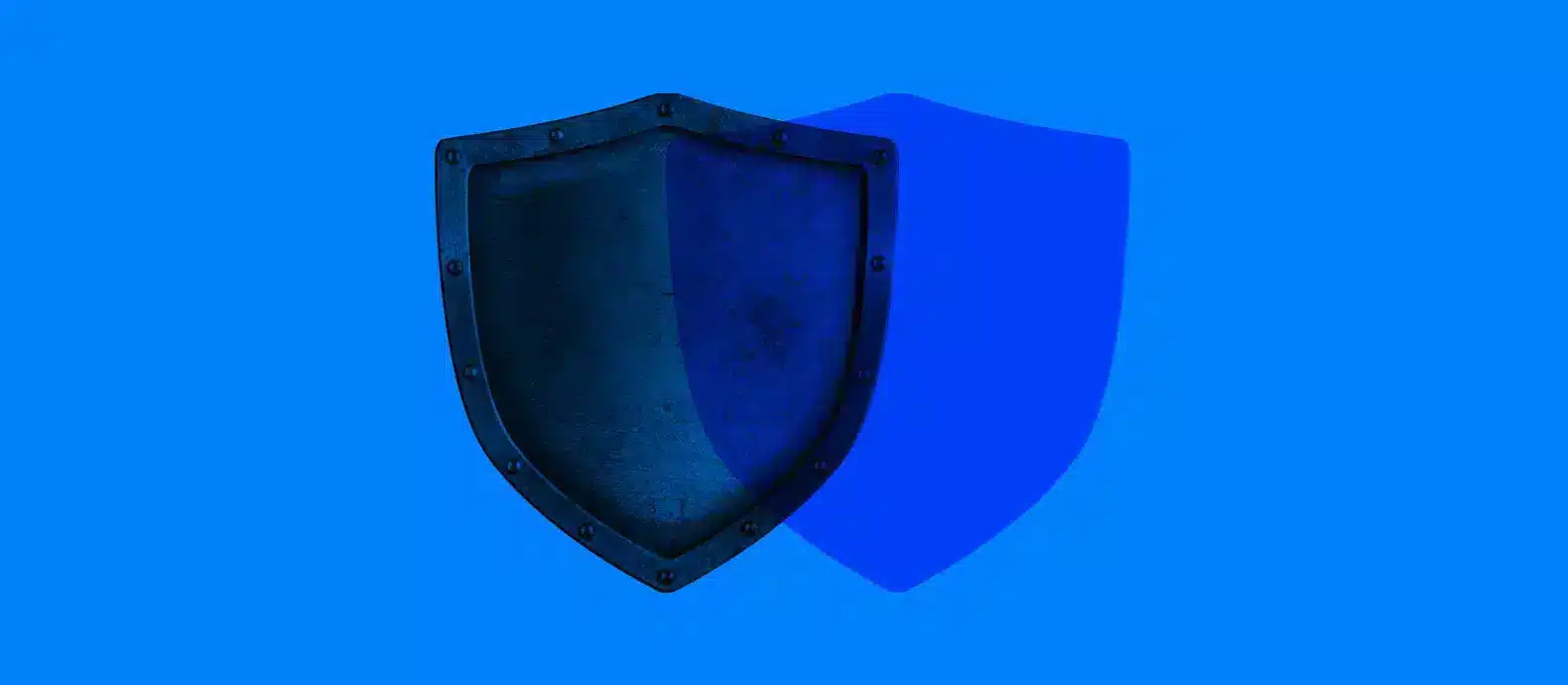Meta, the company that encompasses platforms like Facebook, Instagram, Threads, and WhatsApp, is a powerful ecosystem where brands can connect with their customers. As the world’s leading social media giant, it presents plentiful opportunities for brands to expand their reach. However, with this reach comes the risk of brand infringement and counterfeiting. Protecting your brand on Meta is vital when it comes to maintaining its integrity and value. In this guide, we will walk you through effective strategies to safeguard your brand across Meta platforms.

Why is brand protection on Meta so important?
Prevent counterfeiting
Counterfeit products can damage your brand’s reputation and reduce consumer trust. The spread of fake goods can lead to customers receiving substandard products, resulting in negative reviews and a loss of confidence.
Maintain brand integrity
Ensuring that only your genuine products are represented on Meta protects the integrity of your brand. This involves maintaining the quality, consistency, and reliability of products that consumers expect. Unauthorized selling distorts the brand image and erodes the perceived value and quality of authentic items, undermining the brand’s market standing.
Safeguard consumer trust
Protecting your brand helps maintain the trust and loyalty of your customers. By preventing brand infringements and ensuring product authenticity, brands can sustain the trust and loyalty they have built over time.
Prevent revenue loss
Counterfeits and brand infringements can lead to significant revenue loss if they’re not dealt with swiftly and efficiently. Scammers can also impact the return on investment (ROI) of your marketing spend by diverting potential customers away from authentic products.
Legal compliance
Effective brand protection ensures compliance with intellectual property laws and regulations. Brands are legally obligated to protect their trademarks, copyrights, and patents. Failure to do so can result in legal penalties and loss of legal rights. By actively monitoring and addressing infringements on Meta, brands can ensure compliance with relevant laws, avoiding costly legal disputes and preserving their intellectual property rights.
Competitive edge
Protecting your brand gives you a competitive advantage by ensuring that your brand is both distinctive and recognized for its authenticity. In a crowded marketplace, a brand’s strong reputation can set it apart from competitors. Effective brand protection helps maintain this unique position and attracts customers who value genuine products.
Recent trends in brand infringement on Meta
- Mobile e-shops:
Fraudsters are using mobile-only e-shops as a new circumvention technique. These websites utilize user-agent string information to display different content based on the device. When visited from a desktop, these sites show legitimate content. However, when accessed from a mobile phone, they display a counterfeit website. These websites are typically not indexed, so they do not appear on search engines, and their traffic is generated through social media ads. - Keyword misspelling:
Counterfeiters often use misspelled brand names to avoid detection. For example, they might replace letters with numbers or similar-looking characters, such as “N1ke” instead of “Nike.” This tactic, commonly seen in online piracy, has now been widely used for counterfeiting. The misspellings help counterfeit listings bypass automated detection systems and search filters designed to catch trademark infringements. - Social media channels:
Purchasing agents, also known as dropshippers, promote and facilitate the distribution of counterfeit products from Chinese marketplaces to consumers in the US and Europe through social media platforms. Consumers make purchases from the agents’ websites, which connect to marketplaces such as 1688, Taobao, JD.com, or Tmall. The agents then store and ship the products overseas. These agents use platforms like Discord, YouTube, TikTok, Reddit, and Instagram to share DIY tutorials explaining how to buy counterfeit goods, often including links to their websites or a Google spreadsheet with product details.
How to protect your brand on Meta
Secure your accounts
- Enable two-factor authentication: Use two-factor authentication to add an extra layer of security to your accounts. This helps prevent unauthorized access even if your password is compromised.
- Monitor access: Regularly review who has access to your Meta accounts and remove unauthorized users. Ensure only authorized personnel have access and promptly remove any unauthorized users.
Monitor for infringements
- Use Meta’s Ad Library: The Ad Library catalogs all ads served across Meta platforms. You can use it to search for potential misuse of your brand, from copycats to scammers. This tool can help you identify and report infringing ads quickly.
- Track suspicious activity: Look for unusual spikes in mentions or tags of your brand. These could indicate infringing activity or coordinated efforts to distribute counterfeit products.
Take proactive measures
- Proactive detection: Meta uses machine learning to proactively disable potentially infringing content. To help this process, make sure your official brand information is up-to-date on all Meta platforms. This will enhance the accuracy of Meta’s detection algorithms.
- Search interventions: Meta restricts certain searches that are known to be associated with counterfeit products and piracy. Educate your customers on how to recognize legitimate sources and products to prevent them from falling for counterfeit schemes. Providing guidelines and tips on your official pages can help inform and protect your audience.
Educate your consumers
- Awareness campaigns: Run awareness campaigns about the dangers of counterfeit products and piracy and how to spot them. Use Meta platforms to share informative content that educates consumers on recognizing genuine products.
- Transparency: Use your Meta platforms to educate followers about authentic brand characteristics. Be open about the specific ways that you identify fakes from legitimate products or pages. Transparency builds trust and helps consumers make informed purchasing decisions.
Step-by-step: How to report infringements on Meta
1. Report infringements using the Brand Rights Protection (BRP) tool
- Access BRP: Log in to your Meta business account and navigate to the Brand Rights Protection tool.
- Search for infringements: Use the search function to look for potential infringements by entering keywords, brand names, or URLs related to your brand. The updated BRP tool offers cross-surface searching, allowing simultaneous searches across ads, commerce listings, accounts, and posts without re-entering search terms.
- Report violations: Select the infringing content and submit a report directly through the BRP tool. Include details such as the type of infringement and any additional context to help Meta’s review team. The BRP tool includes features like saved searches and an expanded reference library to facilitate this process.
2. Report infringements through the IP Reporting Center
- Log in: Go to the IP Reporting Center and log in with your Facebook, Instagram, or Meta business account credentials.
- Submit a report: Complete the form with necessary details, including the URL of the infringing content, descriptions of the infringement, and any supporting evidence. The IP Reporting Center allows users to save account information and reporting history, making it easier to manage and track cases.
- Track your reports: Use the reporting history feature to keep track of submitted reports and their statuses, enabling efficient follow-up and case management.
3. Report infringements by integrating the IP Reporting API
- API setup: For high-volume reporting needs, integrate the IP Reporting API with your existing systems. This integration may require developer assistance and allows for automated reporting..
- Automate your reporting: Configure the API to automatically detect and report infringements based on predefined criteria and keywords that are likely to indicate a fake.
- Monitor responses: Regularly monitor the API responses to check that reports are being processed, and take necessary follow-up actions based on the status updates provided by the API integration.
4. Partnering with Red Points for Brand Protection on Meta
While it is possible to report infringements yourself, partnering with Red Points offers several significant advantages:
- Automated detection and takedown at scale: Red Points uses advanced algorithms to efficiently detect and report infringing content across Meta platforms, including identifying similar ads. This automation ensures a faster and more comprehensive response to potential threats.
- Incident prediction and custom prioritization: Red Points can predict potential incidents before they escalate, offering custom prioritization based on the severity of the infringement. This ensures that the most critical threats are addressed promptly, protecting your brand’s reputation and revenue.
- Permanent incident repository: Red Points maintains a repository of all reported incidents, which is invaluable for ongoing investigations, legal actions, and trend analysis. This permanent record helps in understanding trends and improving future protection strategies.
Next steps
Keeping your intellectual property safe across Meta platforms is a continuous effort. Meta provides various tools, such as the Brand Rights Protection tool and the IP Reporting Center, to help you detect and report infringements efficiently. However, submitting similar links or copies individually can be time-consuming and burdensome for brands. Partnering with protection services like Red Points can significantly ease this process. Our AI-powered detection technology and automation streamline the detection and removal of infringements across multiple platforms. Additionally, while Meta enforcement is fast, Red Points offers prioritization and maintains historical data of enforced links, providing a more comprehensive approach to brand protection. This allows your team to focus more on growing your brand rather than managing IP infringements.
What now?
For comprehensive brand protection solutions, take action now and schedule a consultation with Red Points. Our experts can provide a free online infringement scan with no strings attached and discuss customized strategies to protect your brand.
To further enhance your brand protection strategies, explore our additional resources and guides:
- How to remove counterfeits from Facebook
- How to report a counterfeit on Taobao
- How to remove a counterfeit from Aliexpress
- How to report a seller on eBay
- How to report a seller on Amazon












